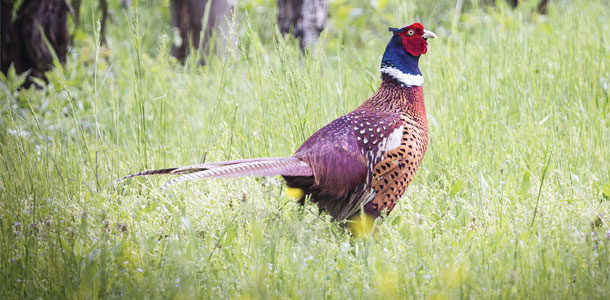What they didn’t know was that with the advent of motor-powered machinery their cover and nesting ground would become hazardous.
Many species of birds and animals use pasture and hay fields as cover, to find food, nesting areas and rear their young. Songbirds, quail, turkey, pheasants, deer and rabbits all use these fields, and there are hay harvesting techniques that can help ensure the survival of ground-nesting birds and other wildlife species.
The Conservation Stewardship Program from the USDA Natural Resources Conservation Service makes the following recommendations to preserve wildlife safety during harvest.
Aim high
Set your mower as high as possible to avoid ground-dwelling wildlife. Raising a mower as little as 5 inches off ground level using wear-plate spacers or slides can save small mammals and birds.
Mow inside-out
Cut hay starting in the middle of the field and mow toward the outer borders, thereby allowing wildlife to stay in existing cover during the haying operation period.
With this pattern, fewer creatures will be killed by tractor wheels or cutter blades, since they will not become trapped inside an ever-decreasing circle. This method also decreases predation by predators who make an easy meal of a young animal or bird trying to cross open ground.
Using wildlife flushing bars
Flushing bars can be mounted on the front of a tractor to move wildlife from the path of dangerous wheels and cutters.
Numerous designs are available. In general, flushing bars are mounted offset on the front of the tractor, at least 10 feet in length, with hanging one-inch chain about 2 feet apart.
The hanging chains should be long enough to ride just above the surface of the ground. A 6-inch piece of chain (or horse bells) can be attached 6 inches above the bottom of the hanging chain to increase weight and noise. The first chain should be located 36 inches from the tractor frame.
Optional considerations
Another wildlife-friendly method is to leave uncut field borders for wildlife cover. Leave uncut a 10-foot or wider strip of hay around the outside of a field to provide food as well as nesting, escape and brood cover for wildlife.
Predators can find nests easier in narrow border strips than in wider borders. Irregularly shaped field borders provide even more cover for wildlife.
Border width can vary, but a minimum width of 10 feet is desirable. This amounts to a little over an acre of hay for wildlife in a field having a 10-foot-wide strip that is a mile in length.
Birds sitting on nests and young wildlife often do not have time to react to and avoid high-speed harvesters. Consider driving at reduced speeds in areas where wildlife have been observed or are suspected of nesting or brood-rearing activity.
If there are several fields to harvest, save the fields closest to wetlands and CRP acreage for last. These fields will likely have a high wildlife density, and a few additional days may make a considerable difference in reducing mortality.
Many hay producers in Clark County, Wisconsin, have adopted one or more of these harvesting practices beneficial to providing escape for hens, hens with broods and hiding fawns.
Jane Reigel, District Conservationist with the Natural Resources Conservation Service, says, “Producers note they are not hitting as many fawns and turkeys as they had before making the effort. While their efforts may not be hugely significant, making an effort for a positive outcome is always a good choice.”
Reigel also says most producers are not able to delay harvesting or harvest only part of their acres, which is one of the options listed. However, most producers have made the choice to use 6-inch cutting heights and to mow only during daylight hours, along with following a pattern to allow wildlife to flush. These practices have made a positive change without added cost. FG
—Excerpts from Natural Resources Conservation Service Conservation Stewardship Program











